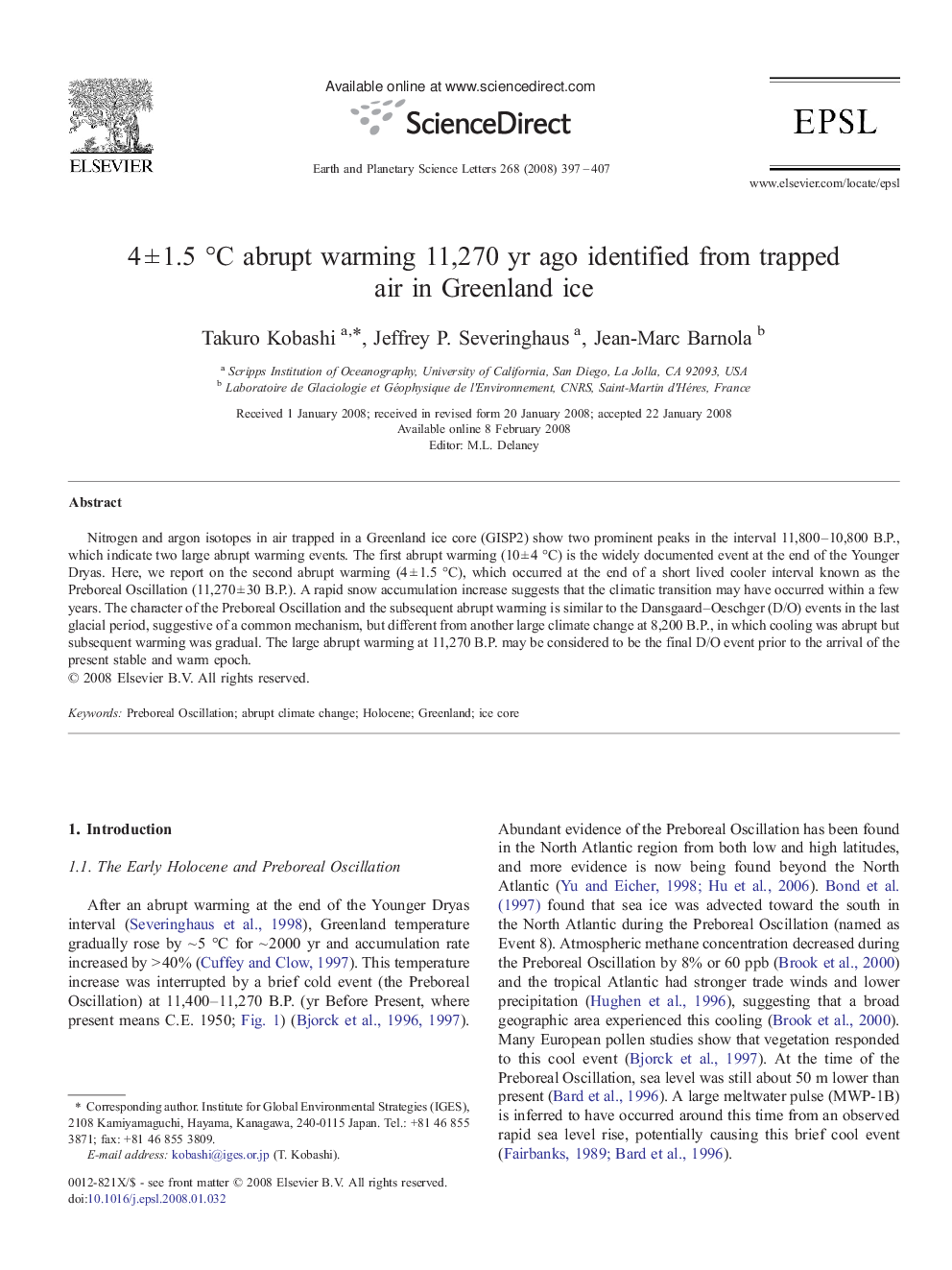| Article ID | Journal | Published Year | Pages | File Type |
|---|---|---|---|---|
| 4679820 | Earth and Planetary Science Letters | 2008 | 11 Pages |
Nitrogen and argon isotopes in air trapped in a Greenland ice core (GISP2) show two prominent peaks in the interval 11,800–10,800 B.P., which indicate two large abrupt warming events. The first abrupt warming (10 ± 4 °C) is the widely documented event at the end of the Younger Dryas. Here, we report on the second abrupt warming (4 ± 1.5 °C), which occurred at the end of a short lived cooler interval known as the Preboreal Oscillation (11,270 ± 30 B.P.). A rapid snow accumulation increase suggests that the climatic transition may have occurred within a few years. The character of the Preboreal Oscillation and the subsequent abrupt warming is similar to the Dansgaard–Oeschger (D/O) events in the last glacial period, suggestive of a common mechanism, but different from another large climate change at 8,200 B.P., in which cooling was abrupt but subsequent warming was gradual. The large abrupt warming at 11,270 B.P. may be considered to be the final D/O event prior to the arrival of the present stable and warm epoch.
